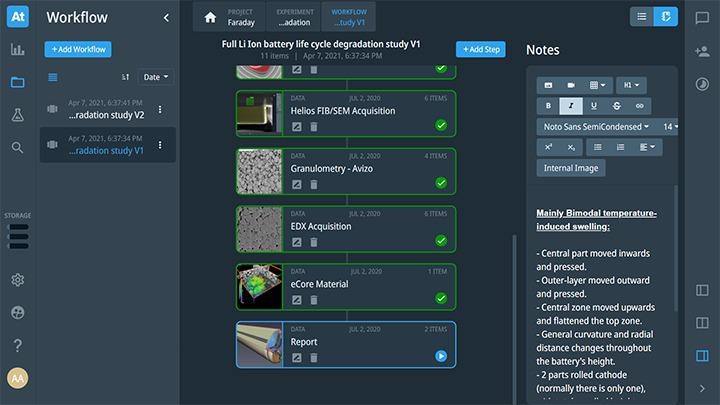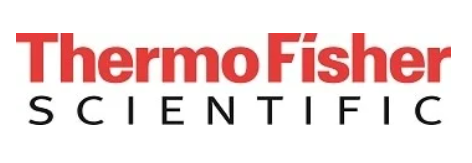This interview is with Thermo Fisher Scientific, showcasing Athena Software, the new imaging data management platform for core imaging facilities dedicated to materials research.
John Sos, president of the materials and structural analysis division of Thermo Fisher Scientific will discuss the biggest challenges that core labs are facing when it comes to managing imaging workflows.
Clément Lore, product marketing manager in charge of the Athena solution, will introduce the software platform. Finally, Dr. Ali Shirazi of Thermo Fisher will discuss detailed functionalities of the Athena platform in a case developed in collaboration with the University of Manchester in the United Kingdom.
John Sos, could you give a brief introduction to Athena Software?
John: Athena Software greatly simplifies the management of imaging data and experiment workflows in materials research. Athena software makes your imaging data traceable and shareable, which in turn makes experiments more easily repeatable.
The big problem we have noticed is turning massive datasets into information, which requires a much more integrated view of software. More and more, we are bringing together information from multiple instruments to provide a very rich picture of a material's behavior. To do that, you need to be able to manage that data, merge it and co-visualize it, analyze it, and put one in the context of the other.
Along with access to a rich source of instrumentation, you suddenly become involved with a very large number of stakeholders.
There are a large number of people involved who need to be able to see the data, need to be able to understand where we are at and need to be able to contribute ideas and their work. This requires a much more flexible and agile way of bringing data together, building teams, and collaborating.
John, can you describe Thermo Fisher’s role in addressing the challenges and emerging needs previously described?
John: Because of these challenges faced today, core imaging facilities are at the heart of a digital transformation and must align their client’s research with FAIR principles: F for findable, A for accessible, I for interoperable, and R for reusable. This new standard aims to provide researchers with an easy-to-access collaborative and secure process for working with their experimental data.
Thermo Fisher has been removing barriers to discovery for a very long time, and we will continue to do so by partnering with leading imaging facilities and the global scientific community. Our long, rich history as pioneers in the digitization and management of scientific imaging data uniquely positions us as a valuable technology partner to support you through your digital transformation.
Clément, can you tell us a bit more about the general capabilities and features of Athena Software?
Clément: Athena Software is a premium imaging data management platform that allows core imaging facilities to simplify their scientific imaging workflows. With Athena Software, it is possible to manage, view, and share images, data metadata, and experimental workflow results from a single platform.
Athena Software makes it possible to collect and centralize data and metadata acquired by any instruments or software or added directly by a user, increasing productivity.
Athena Software allows users to explore and share large data without duplicating it by providing data storage in a central location and accessible from everywhere using a simple web browser. It is possible to archive data to cold storage, export, and download directly from the web interface.
Athena Software offers advanced capabilities for viewing images, data, and metadata remotely and in real-time as well as allow users to remotely visualize a large proportion of the 2D and 3D formats used in materials science research from a web browser without the need for dedicated hardware.
Collaboration tools, such as annotations, advanced notes, and instant messaging are available, facilitating interactions between users. An integrated search engine allows any user to easily find the information they need when they need it.
Athena Software ensures traceability, reliability, reproducibility, and security. Users can confidently share and access projects, experiments, workflows, data, and metadata, anywhere in the world, 24 hours a day, seven days a week.

Ali Shirazi, can you present a real-life example of how Athena Software can be used to manage scientific imaging data for materials research?
Ali: The damage study of Ffber-reinforced composites is an ongoing collaboration with the University of Manchester, within the framework of the European MUMMERING project. Athena Software can help define notes and metadata that will explain what the project is all about and at the project level, you can define different experiments.
In the present case, the experiment will use epoxy-based glass fiber composites for wind turbines. We have defined within the Athena project a specific type of sample and have the structural type, fiber type, average diameter, average lens, and other information that you can incorporate into the metadata area.
Ali, could you speak in more detail about the specific collaborative and user features of Athena?
When you have collaborative projects, you need to comply with all the data requirements in terms of data traceability and repeatability of your experiment and workflow. With Athena, you can define different workflows for the same sample type. You can define different sample types for the same workflow.
Within the workflow, you can define all the different steps of your experimental procedure. In the notes part, you have the equivalent of a digital lab book where you can briefly describe different steps of your workflow. You can message and chat about the progress of the project. You can incorporate images, videos, text, whatever is needed for your colleagues or for somebody who would like to come back and verify what has been done with regards to the sample and its preparation and use.
Thanks to the integrated high-performance 2D and 3D viewers, you can visualize images and datasets from the web interface. In Athena, you do not need any kind of specific hardware on the client's side or the download of a specific tool, plugin, or software to visualize your live data. The computing and rendering are done on the server-side, and for security reasons the data remains on the secured server. Different kinds of layouts are possible for your viewing.
You can also make annotations, share them, see which collaborator added their annotation. The information is secured, centralized, traced, and can be accessed by multiple users, using different roles, and with different authorization settings.
Can you delve into incorporating different datasets using the innovative capacities of Athena?
Athena users can also incorporate different experimental procedures like in situ and ex situ mechanical testing or any kind of experimental measurements and procedures that you need to incorporate. You can then define all the different acquisition steps that you may have.
For example, if you have micro-CT measurements on two different systems, you can have a description of what has been done and why. You can incorporate any number of datasets. And afterwards, once your experiment is finished and your project is finalized, you can archive the data if necessary.
Can you walk us through what other functionalities available to Athena Software users?
You can always come back and continue your workflow. You can include any type of correlation image processing that may be required as well as other digital or processing steps.
Athena allows you to go into great detail about all the different aspects of what was done to the images, how the images were processed and why. If one needs to use another type of software, the generic information that can be put in the notes and metafiles will enable them to use any type of data.
You can continue after some intermediate image processing to other types of acquisitions. You can also insert the data, ensure the intermediate results, and define the kind of system on which the acquisition was carried out.
There is also the search capability, which is quite comprehensive. Once the project is complete, you can just archive what needs to be archived, and you can keep the project for your reference.
What other capabilities of Athena make it useful for long-term projects with rigorous data-compliance requirements?
You can define the zone where you have all the reports and presentations and conclusions, or even intermediate conclusions of your project.
For example, in an ongoing project, you have a first paper that has been published where you can include the PDF file and you have a PDF viewer that allows you to view it.
If, for example, in five years you, or a colleague who took part in the project, or a third-party wishes to come and verify data, verify a result, verify software that has been used for image processing, the type of acquisitions, the instruments, you have complete data tracing and data traceability and repeatability for the entire process.
This is extremely important to comply with grant requirements, which may come from government or industry, to meet all data compliance requirements.
Learn more about Thermo Scientific Athena Software
About John Sos,
President, Materials & Structural Analysis, Thermo Fisher Scientific
John joined Thermo Fisher in 2011 as VP and GM of Molecular Spectroscopy. In 2013, he was appointed VP and GM of Life Sciences and Mass Spectrometry. In 2015, he became President of BioPharma Services. Before joining Materials & Structural Analysis in 2019, John spent two years as the President of Instrument and Enterprise Services, transforming Thermo Fisher’s service capabilities via the use of digital technologies.
About Clément Lore
Product Marketing Manager, Materials & Structural Analysis, Thermo Fisher Scientific
Clément is Product Marketing Manager for Thermo Scientific™ Athena Software. He has been with Thermo Fisher since 2016, previously serving as Marketing Manager. After getting a master's degree in strategic marketing, Clément built a solid experience of 12+ years in the development and implementation of marketing initiatives for software products in scientific and industrial environments.
About Ali Chirazi
Staff Scientist, R&D, Materials & Structural Analysis Division, Thermo Fisher Scientific
Ali obtained a MEng in applied physics with specialization in nuclear and atomic physics from the University of Brussels. He got his PhD in Multiscale Computational Materials Science applied to light alloys from the University of Greenwich, UK. Since 2016, he has been Senior Materials Scientist with Thermo Fisher, working on multi-modal and multiscale correlative workflows in Materials science.

This information has been sourced, reviewed and adapted from materials provided by Thermo Fisher Scientific – Electron Microscopy Community.
For more information on this source, please visit Thermo Fisher Scientific – Electron Microscopy Community.
Disclaimer: The views expressed here are those of the interviewee and do not necessarily represent the views of AZoM.com Limited (T/A) AZoNetwork, the owner and operator of this website. This disclaimer forms part of the Terms and Conditions of use of this website.